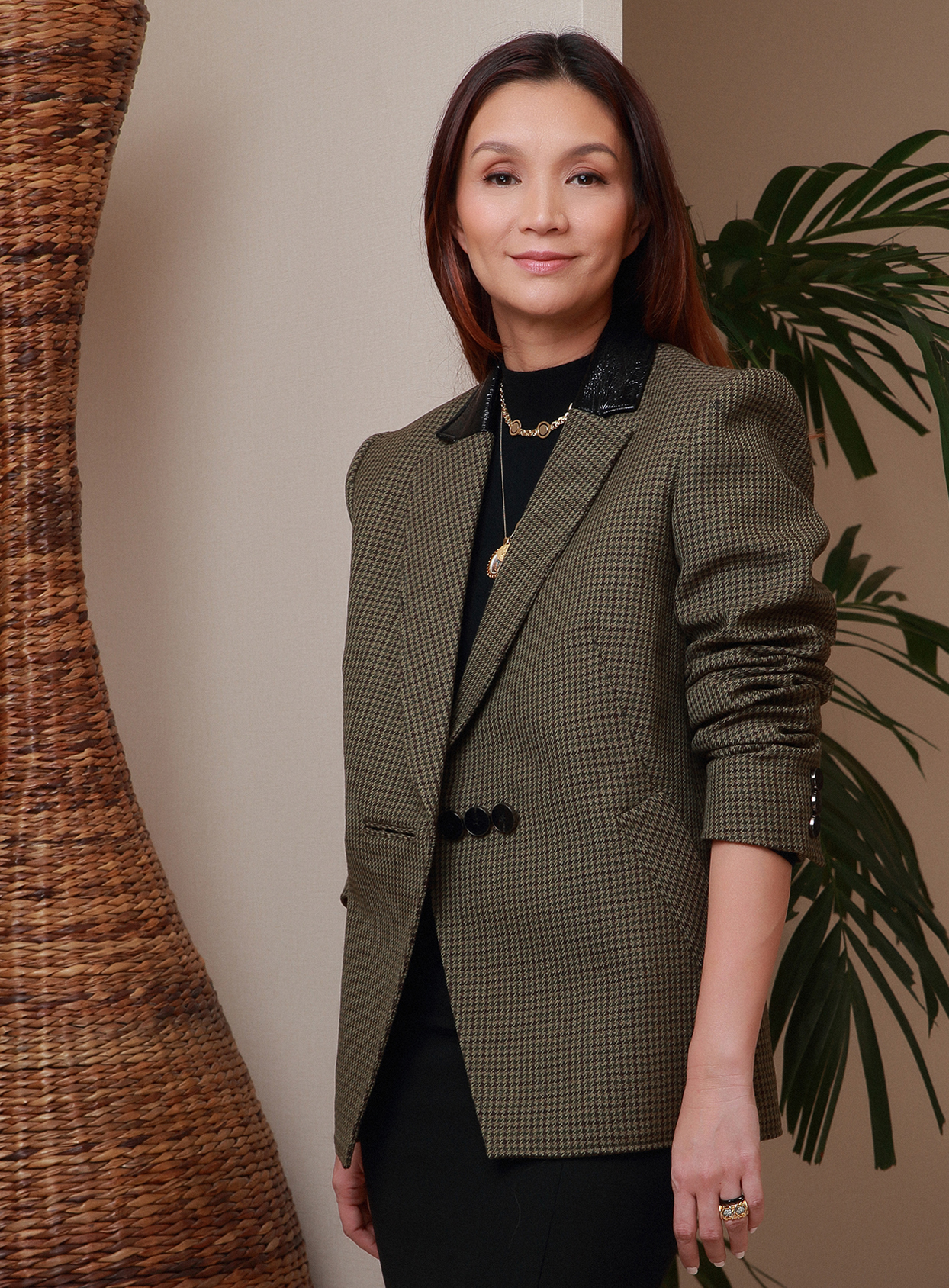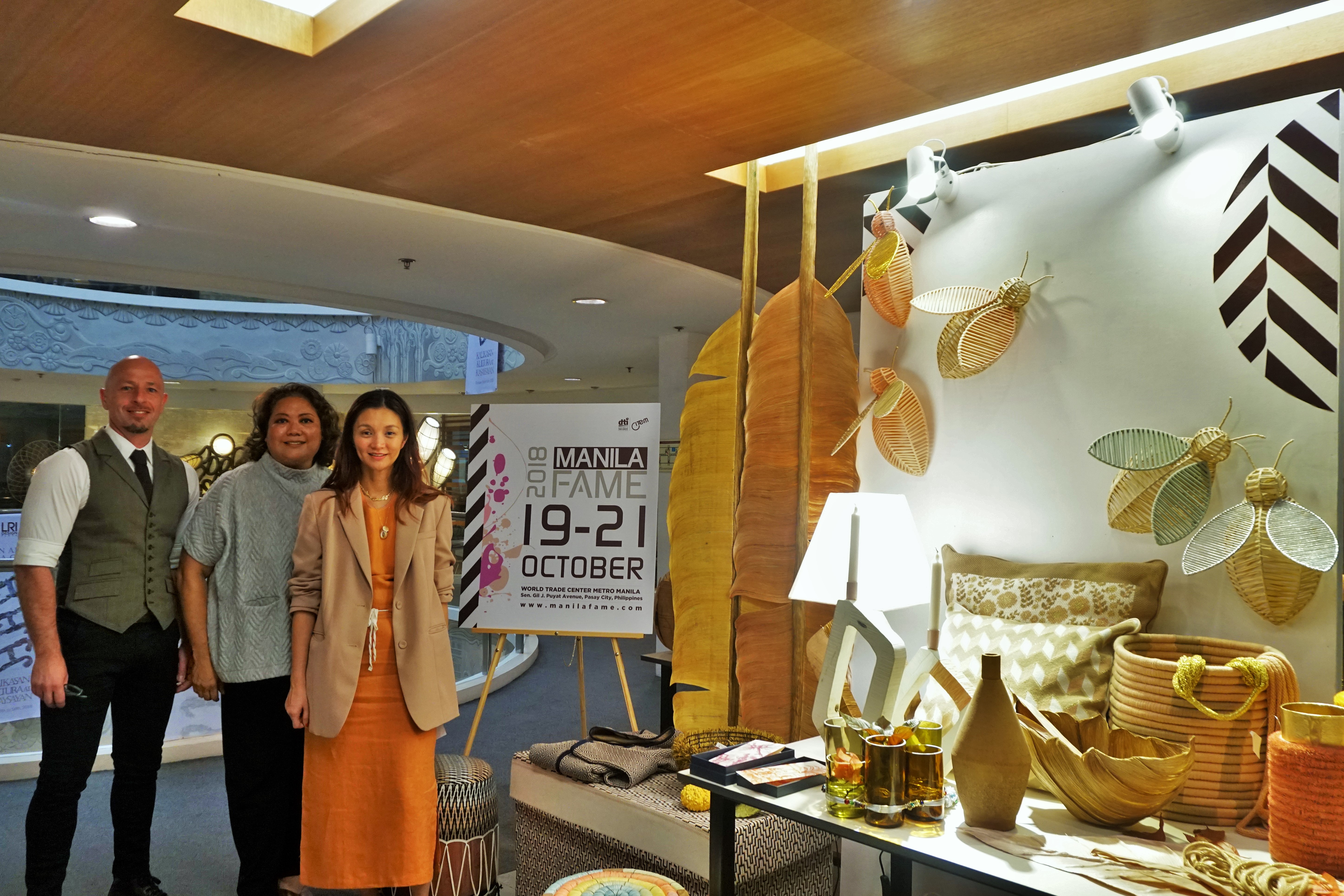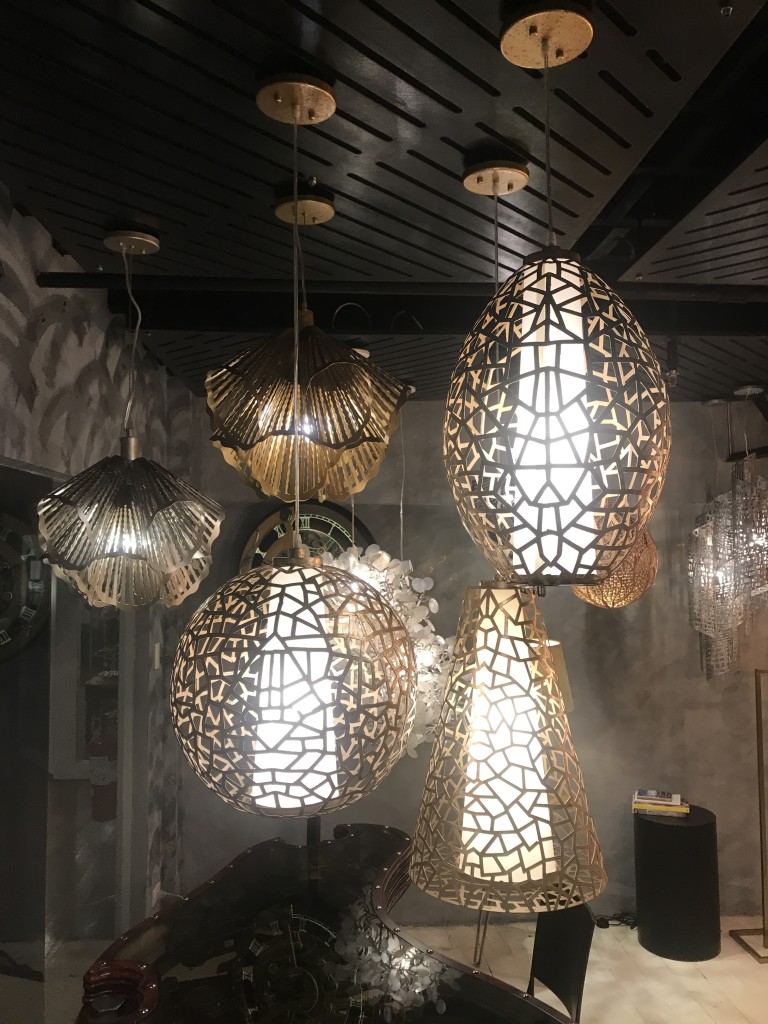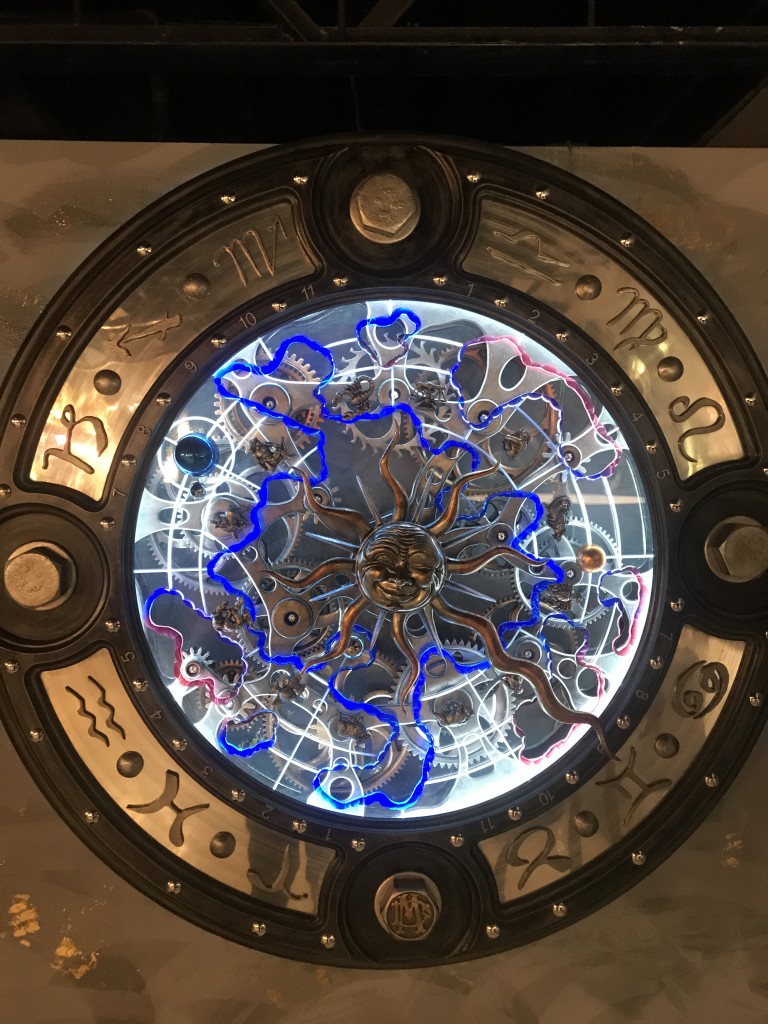The veteran journalist-turned-executive director underscores the importance of going digital and broadening mindsets if the country is to reach out to more international buyers and compete with the best in the world.

By Alex Y. Vergara
As usual, all eyes are again focused on tomorrow’s Manila FAME (Oct. 19 to 21), the Center for International Trade Expositions and Missions’ (CITEM) three-day biannual trade show featuring the best and the latest locally designed and produced furniture, home accessories and fashion items. But this time, the world-renowned event’s stakeholders, including exhibitors, buyers and members of the media, are doubly eager to see how its 68th edition composed of 366 exhibitors at the World Trade Center in Pasay City unfolds because of one person: journalist-turned-Manila Fame Executive Director Pauline Suaco-Juan.
Pauline, who joined CITEM, a government-owned and -controlled corporation (GOCC) directly under the Department of Trade and Industry (DTI), barely two months ago, is no ordinary journalist, of course. As the former editor in chief of Preview Magazine, she steps into the position with a trained eye, especially when it comes to everything and anything lifestyle-related, and a clear idea of her mandate: to market Brand Philippines to the entire country and the rest of the world.

After all, as a former lifestyle journalist, Pauline also used to cover Manila FAME. Through the years, she has seen it expand and develop into what it has become today—a mecca for Filipino creativity and a prime mover in generating business activity and jobs for the country’s exporters and their employees.
“We’ve all covered it through the years,” Pauline said to her former media colleagues, as she explained to them why she said yes to CITEM’s offer. “At the end of the day, perhaps it’s about time, you know, to give back. You can’t complain if you don’t do anything about it, right?”
But because she wasn’t a former exporter and didn’t come from either the ranks of the bureaucracy or advertising like most of her predecessors did, people who don’t know Pauline tend to view her as an unknown entity. Those who do know her can’t help but scratch their heads and wonder aloud: after all these years, why dive now into the bureaucracy?

Well-deserved semi-retirement
After being at the helm of one of the country’s leading fashion magazines for 16 years, Pauline seemed to be enjoying a well-deserved semi-retirement with her husband and three children. Friends readily surmised that if there was anything that could convince her to return to the daily grind, it would most likely be the top position of a newer, bigger and presumably more influential media outfit. It turns out that she had other things in mind.
“They were doing fine when I came in,” said Pauline, referring to people at CITEM. “This coming edition of Manila FAME was already 80 percent complete when I came in. Actually, they can put up a trade show with their eyes closed. Seriously!”
Her true value to the institution, she continued, is the fact that although she’s an outsider, she’s also part of a creative industry known for telling stories. After all, what’s marketing? In essence, like journalism, it’s also about storytelling using a different medium.
Pauline also believes that her then future bosses also saw and appreciated her background in digital media. If Manila FAME is to grow, attract more buyers and be on par with bigger, more celebrated trade exhibitions abroad, she thinks it should further invest in and strengthen its digital presence. This she intends to start working on as soon as she and her team are done with the forthcoming edition of Manila FAME.
That she is, as stylist Luis Espiritu put it, a “child of fashion” wasn’t lost on Pauline as well. While local furniture and home accessories have enjoyed mainstream success in the global market, local fashion, particularly garments, has yet to make a considerable dent abroad. DTI has probably seen what Pauline could bring, as Philippine fashion tries to play catch up.

For her part, Pauline has taken it upon herself to help educate fashion designers stuck on the made-to-order, service model to transition to a ready-to-wear one, including the need for them to produce decent look books and know proper pricing.
“Some of these designers have done it or their own,” she says, referring to the likes of Mark Bumgarner and their attempts to study and anticipate the global market’s requirements. “But in the end, I can’t tell them how to run their businesses.”
As she sees it, only a few fashion designers know the value of such tools in their quest to penetrate the global market. Fashion weeks, she said, are essentially trade shows abroad. It’s only in the Philippines where such events are mere “PR mechanisms.” In other words, local fashion shows are just that—shows.
Fashion pedigree
“I don’t know if they hired me because of my knowledge about fashion,” Pauline said. “I can’t speak for them. I didn’t ask. But from what I surmised, it was my digital experience (as EIC of Preview and its online counterpart) [that caught their attention].”
“When you think about it,” she added, “what I did in Preview, editing a magazine, wasn’t totally different from what I’m about to do at CITEM. We were selling soap, shampoo and cosmetics. The most fun part about the job was really being able to talk about Pinoy talent, spot these talents and build on their stories until they were able to succeed as businesses and brands.”

As Pauline further revealed during a recent Manila FAME media preview at the LRI Building in Makati, accessories designer Amina Aranaz and fashion designer Rajo Laurel were instrumental in her decision to accept CITEM’s offer.
The GOCC was really looking for an executive director when it first offered the position to Rajo and Amina. It was clear from the start that CITEM wanted to hire a “creative” who understands and knows how to marry lifestyle with business, including promotions.
Well recommended
Since both Rajo and Amina have full-time jobs, they declined. Citem then asked them if they have somebody else in mind, “someone who had just retired,” says Pauline, quoting Amina and Rajo, “na pwede ninyong guluhin (whom you can tap). It was funny because both of them thought separately of recommending me.”
CITEM sent fillers to Pauline, and she responded. When she was being interviewed by DTI Assistant Secretary Rosevi Gaetos, also herself a former executive director of CITEM, Pauline had a realization that made her pause: the scope of her responsibility went beyond Manila FAME, as it also includes IFEX Philippines, a separate trade show devoted to the country’s food and agro-marine sectors and the newly launched CREATE Philippines, which is envisioned as a launching pad for the country’s creative talents.
All these on top of the various trade shows abroad, which CITEM helps facilitate for Philippine companies to join in. When the reality finally sunk, Pauline, instead of being fazed, became more intrigued by the possibilities that lie ahead. Besides, she won’t be alone, she said, as she will be working with various product specialists and technical teams in mounting these other exhibits, including the country’s participation in outbound trade shows. It can’t be that bad, she thought to herself.

Like a typical outsider, “I used CITEM and Manila FAME interchangeably,” Pauline related, laughing. CITEM’s scope, which includes Manila FAME, of course, is much broader. But since Manila FAME has become so much a part of the country’s national consciousness, outsiders tend to view the two as one and the same.
Since it deals mainly with food products, IFEX Philippines, which happens every May, comes with its own challenges like product development, supply issues, food safety issues and different regulations in different markets, to name a few. But Pauline acknowledged the food sector’s bright future, especially on the global stage. After years of focusing almost solely on fashion and home, the world has lately begun training its sights on food.
“Food is very matunog (hot) right now,” she said. “The time for food is now.”

Marketing creatives
At the same time, she’s excited at the prospect of what CREATE Philippines could bring. CITEM, with Pauline already on board, just finished staging CREATE Philippines’ second edition last September. What exactly is it? It’s simply a venue to highlight and sell the country’s creative talents to the world.
“With BPOs slowing down, the next bright spot is for us to market and sell our creative talents, which is similar to initiatives done in countries like the UK,” Pauline explained. “When you look at problems within the creative economy, a lot of it is underground. How many local designers, for instance, do we know of who don’t have business permits? Their contributions to the economy aren’t even counted.”
Going digital
On her plan to launch a “digital Manila FAME” and eventually monetize it, Pauline hopes to see it up and running by late 2019. To be fair to CITEM, going digital has always been in its plans. The problem was it couldn’t find the right person to initiate it until Pauline came on board.
As budgets of buyers all over the world continue to shrink, going digital, which is much more than just maintaining a website, is the only way to go. In their desire to save money, for instance, not a few buyers now go to Manila FAME once a year. Digital content is a way of keeping buyers, without them even flying to the country, mindful of the Philippines and engaged in what it has to offer.
“Again, in essence, it’s really about storytelling,” said Pauline. “It’s about being able to pick and tell the world what’s good about a certain product, design, material, or exporter.”
And since Pauline Suaco-Juan is first and foremost a storyteller, she could easily come up with “five million and one stories” on a particular item, collection, or even trend.
The 68th edition of Manila FAME opens tomorrow, Oct. 19 until Oct. 21, at the World Trade Center, Pasay City.





